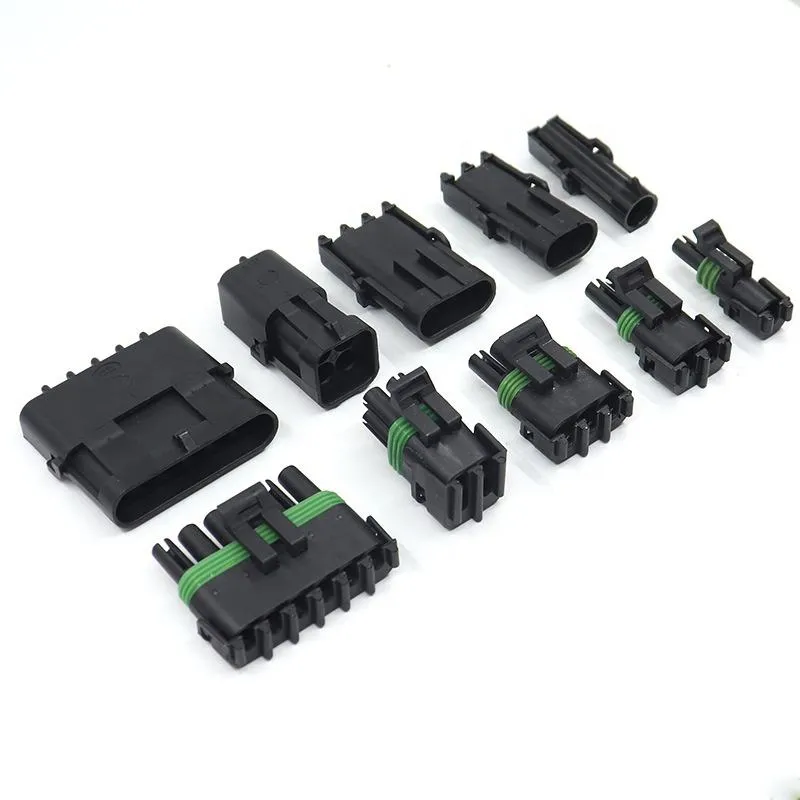Often, it is a tale of legendary engineers. The American company Burndy, once a prominent name on the charts, owes its success to its founder’s invention of a connection method that requires neither soldering nor flux.
Meanwhile, the German company Phoenix Contact made history in 1928 by inventing the world’s first modular, combinable terminal block, which serves as the precursor to modern connectors.
The self-locking technology that allows for direct insertion without cold crimping has established Phoenix as a technological leader in the terminal block market.
Hands-On Control Over Supply Chains
These companies share a common trait: they are hands-on and ensure meticulous control over their supply chains. In its early days, Phoenix even manufactured its own screws and plastic components.
Another German firm, Weidmüller, developed its own machine tools for processing equipment. In 1941, engineer Whitaker created a reliable alternative solution for rigid welding termination, which inspired him to establish AMP—a company that remains in the top ten today.
The Japanese company JST, also a pioneer in crimp terminals, exemplifies the spirit of resourceful and exceptional engineers who have sparked a wave of product innovation and established numerous connector enterprises.
Living Relics of History
In the realm of connectors, many long-standing companies stand as living relics of history.
In March 1943, the director of the U.S. War Information Center graced the cover of Time magazine, but the true stars of the photograph were two microphones—symbols of public information dissemination.
The internal connectors of these microphones were supplied by ITT Cannon. This simple image hinted at two promising markets for connectors: one being the remarkable rise of mass communication for the public, and the other the emergence of military power.
ITT Cannon’s connectors set the standard for military aircraft connections, marking a pivotal moment for the standardization of the defense industry.
The Significance of Communication and Defense
Following World War II, the U.S. military established numerous standards, which significantly advanced quality development. This moment crystallized the significance of communication and defense as the two most important application markets for connectors—a principle that continues to this day.
Although market shares have slightly shifted, connectors remain crucial for the military. China Aviation Optical-Electrical Technology, with its roots in aviation, has benefited from breakthroughs in aviation connectors, earning its position as the second-largest publicly listed connector company in China, with revenues of 13 billion yuan in 2021 and an astonishing 25% growth last year, largely due to its dominance in the defense sector.
By this standard, it may enter the global top ten connector rankings by Bishop, potentially displacing a Japanese company.
The Second Wave of Development
The development of an industry does not solely rely on technological advancements. In the 1990s, the onset of global manufacturing, coupled with the widespread adoption of transoceanic cable television and the rise of the computer industry, generated an immense demand for connectors.
Driven by market forces, the connector industry swiftly entered a second wave of a new generation of peak development. All four Chinese companies in the global top twenty share this narrative.
Foxconn rapidly rose in Shenzhen by providing connectors for Dell and HP computers, while the founder of Luxshare Precision came from Foxconn, indicating a lineage of opportunity stemming from market presence.
When a significant amount of manufacturing shifts to a country or region, market-driven rather than technology-driven dynamics tend to dominate.
Capitalizing on Market Demand
Derun Electronics capitalized on the booming home appliance market, while China Aviation Optical-Electrical Technology thrived on the demand for military connectors driven by the aviation industry.
Over the past decade, the connector industry has entered a new phase characterized by capital-driven growth. Capital has become a dragon, a new force surging through the clouds, further altering the landscape of connectors. This marks the third stage of development for the connector industry.
The Challenges for Latecomers
In this environment, latecomers find it challenging to maintain momentum; they often become unwitting prey in a highly monopolized oligopoly market.
The intense capital drive welcomes an ever-expanding long-tail market, which gradually integrates into leading enterprises, leaving the overall market structure largely unchanged. While the market remains active, it lacks surprises, making it difficult for disruptive forces to emerge.
This has always been the prevailing attitude in the connector industry, where the leaderboard is consistently populated by a few unexciting faces. Yet, behind this monotony lies the swift decision-making and action akin to lightning.

